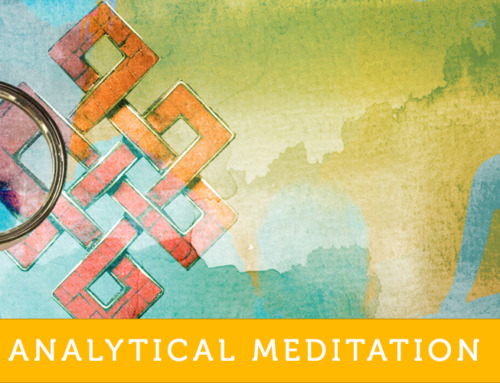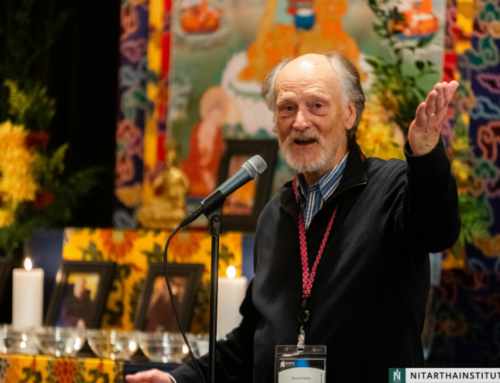Mind and Its World II:
How Mind Engages with its World
After exploring how mind cognizes in a valid or non-valid way in the first course in the Mind and Its World series, we are ready to look at how the mind works from the perspective of the way in which it engages with its objects, also known as “modes of engagement.”
We spend a lot of our time engaged with our concepts, though we are rarely aware of this. Of course the conceptual mind is very useful, we need it to navigate our experiences of the world. But it is not a direct perception, it does not accurately represent the things that it cognizes. Instead, in order to organize all those limitless phenomena that are constantly bombarding it, the mind generalizes, eliminates, negates, and draws connections and contradictions.
These modes of engagement apply to all of the minds that were discussed in Mind and Its World I. And while this topic is related to both specifically (SPC) and generally characterized phenomena (GCP), the course goes into great detail about how the mind engages with the latter. This is because the mind of analytical meditation arrives as an experience of SCPs only by distinguishing those from GCPs. There is no other way for conceptual mind to experience SCPs.
Because of this process, conceptual mind cognizes its objects in a fuzzy, vague way. This is okay as long as we understand that it is mistaken and we do not think our concepts are really how the object is. But we too often do think that, don’t we? And then we act on these ideas, which is when we can get into trouble. This can lead us to behaving unskillfully at best, or even committing harmful actions that are not backed up or justified by anything substantial whatsoever. So knowing how this conceptual mind engages is very practical. We can use this knowledge to question our interpretations of our world before we act.
Fortunately, the conceptual mind has very useful methods for arranging the specific appearances that it experiences into a general concept. Otherwise, our minds would be completely overwhelmed by the plethora of phenomena that are constantly bombarding it. While it clearly needs these strategies that it uses to organize information, this process itself results in the conceptual mind always generalizing these myriad of experiences, so what it experiences is never an accurate depiction of the object that it is experiencing.
Understanding the mind’s methods for dealing with phenomena when it engages with them, or its “modes of engagement” of mind helps us to identify the many ways in which the conceptual mind’s experience is a distortion of that which it perceives. Knowledge about how this happens helps us to realize that what we think about an object is not really what that object is. This is very useful. For instance, when we think of someone as our enemy, we can break that idea down to the point at which “enemy” becomes just a mere label. As a result, our rigidity about that person will fall away and we will become more flexible. Therefore, this is an excellent tool for undoing our unfounded assumptions, prejudices and misunderstandings about ourselves and others.
In other words, this knowledge helps us to distinguish when we are experiencing something directly versus conceptually. In shamatha meditation this is crucial, since the technique is one of bringing our attention to the specific object, rather than focusing on our concepts about it. But if we don’t realize when our mind is engaged in concepts and when it is engaged non-conceptually, it would be impossible for mind to rest directly on its object. Differentiating SCPs and GCPs through these teachings will allow us to gain confidence in our ability to see the difference between conceptual engagement and non-conceptual engagement, thereby enabling us to become self-sufficient in evaluating the progress of our meditation training.
So, how does mind engage with phenomena? That is the subject of the second portion of our Lorik root text, which we started in Mind and Its World I. Digging into the details of these modes of engagement is a fascinating process of discovery of how our mind works from the perspective of these different angles. This serves as a highly useful tool when we apply that knowledge to our own minds, on and off the cushion.
Nitartha Institute’s Mind and Its World II course will be taught during the 2024 Summer Institute as part of Study Level 1, and is included in your Summer Institute tuition. Also enjoy Dzogchen Ponlop Rinpoche’s special talks on “Mahamudra Lineage Chit-Chat,” Mind and Its World I and II, and onsite enhancement activities at Lewis & Clark College in Portland. (Courses will also be livestreamed and recorded.)






